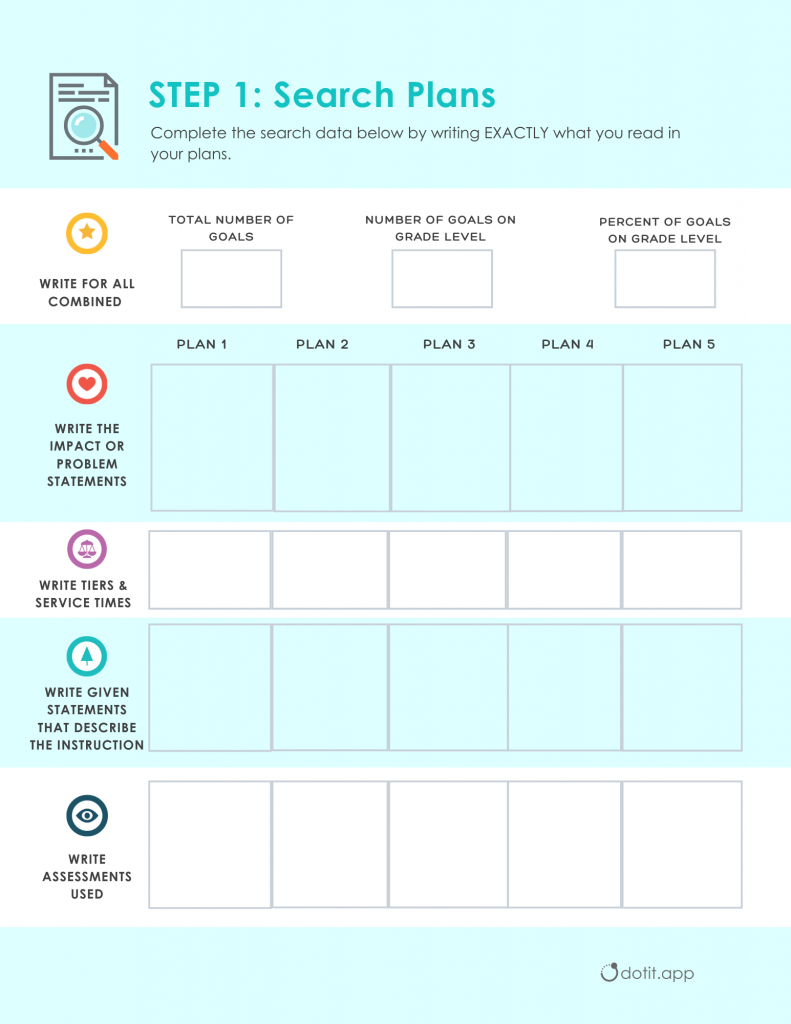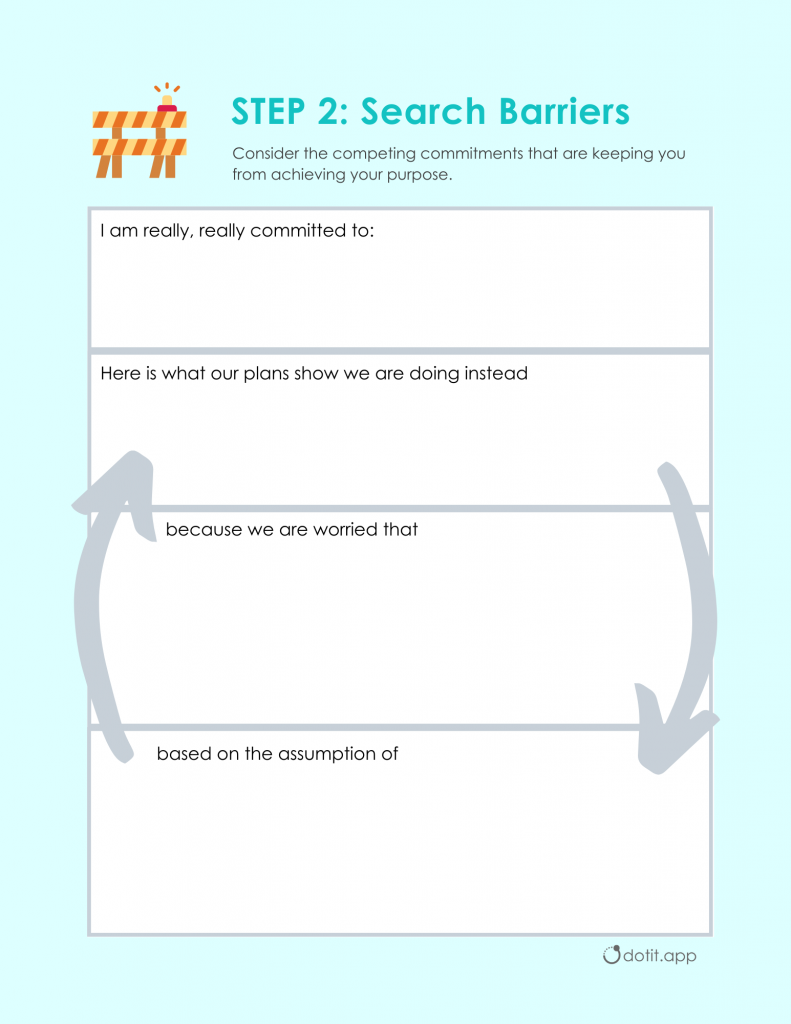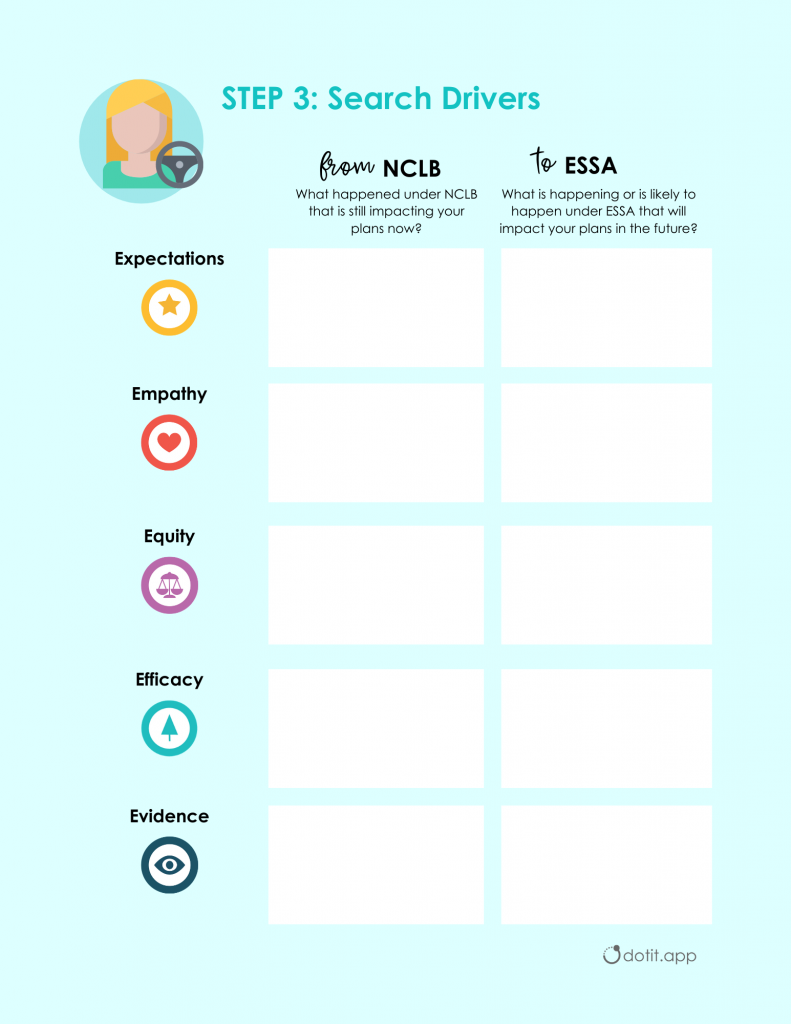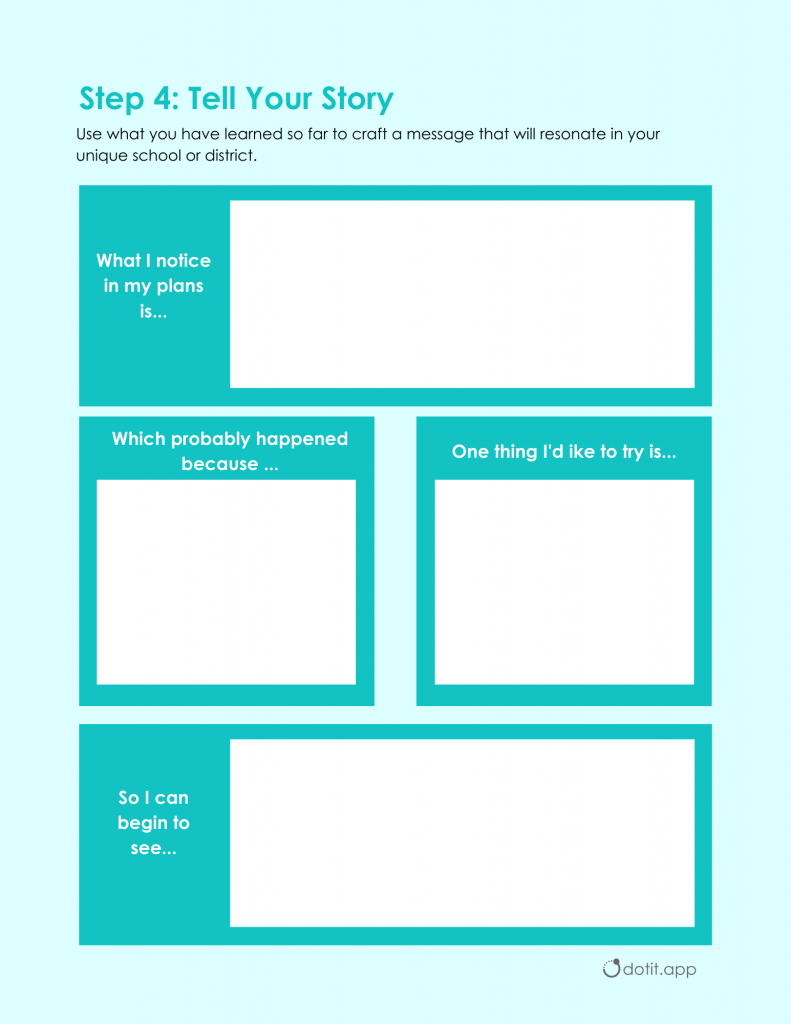No one rises to low expectations. – Les Brown
Getting everyone on grade level is a complex problem. When problems are complex, analysis is not the best way to find solutions. Conduct an inquiry instead. In this post, we will share a 4 part inquiry into your current MTSS plans and IEPs.
First, you will search your plans without judgment to get a snapshot of what is actually on paper. Second, you will identify a commitment that you really, really care about and then search for barriers that keep you from achieving it. Third, you will define change from NCLB to ESSA in 5 essential practices of exemplary schools that will take you and your team where you want to go. Fourth and finally, you will describe the journey that brought you to where you are. Telling your story brings a big sigh of relief and makes the case as you advocate for getting everyone on grade level.
Download this inquiry to help you achieve the following objectives:
- Understand the underlying assumptions that are reinforcing the same old patterns of performance year after year.
- Develop a shared realization of why you are getting the results you are getting and how your plans are shaping your current outcomes.
- Depersonalize problems by recognizing their root causes to minimize resistance and maximize openness to doing something different.
- Identify your greatest opportunities for the next steps you can take safely to get your plans on grade level.

STEP 1: SEARCH YOUR PLANS
In step 1 you are searching for information, knowledge, and understanding about the plans you have. It is a snapshot that describes how you are planning, delivering, and monitoring the services you are providing now. In the SEARCH PLANS phase of your inquiry, refrain from making judgments. Leaps in judgment based on assumptions prompt reactions that almost always make the problem worse. Just use the guide to write exactly what is written in 3-5 of your current plans.
 STEP 2: SEARCH YOUR BARRIERS.
STEP 2: SEARCH YOUR BARRIERS.
You walk into a meeting and a colleague graciously offers you a donut she brought to celebrate your birthday. You are trying to stick to your diet and avoid sweets. Do you show appreciation by taking her gift or keep your commitment to yourself? In the groundbreaking work Immunity to Change (Harvard Business Press, 2009), Robert Kegan and Lisa Lahey reveal that barriers are almost always self-imposed competing commitments that have worked for you in the past. There is an elephant in the room in the form of competing commitments that get in the way of what you need to do to achieve what matters most to you. Use the guide activity to discover aha moments that will help you remove the barriers and take the next steps.

STEP 3: SEARCH YOUR DRIVERS.
As we have said, the problems with your MTSS plans and IEPs are rarely PERSONAL. They are almost always SYSTEMIC. That means that the plans you have now are the result of changes in the education system that have occurred over the past 5 years or so. Searching the change drivers answers the WHY question. Remember, your current plans are not due to failure. They represent success in the old system.

STEP 4: TELL YOUR STORY.
Inquiry is not a prediction of doom. It is an early warning system. Its impact depends on how you communicate the message. Share the story as a picture of success in the past instead of an image of failure. As a leader, you may be concerned about sharing the story. However, if you don’t share it, it defeats the purpose of the inquiry. In our experience with formulating messes, people are already aware. They just don’t get to talk about it. They want to know that YOU know…which usually brings a huge sigh of relief. From there, you can move forward getting everyone on grade level together.





